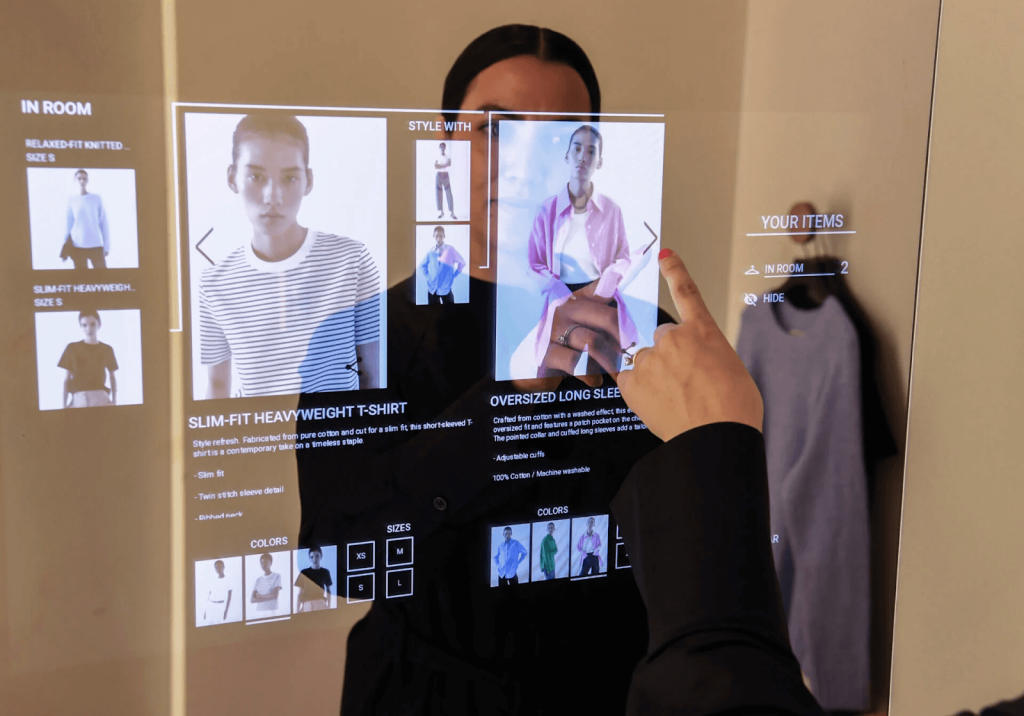
Author: Sandeep Gulati
Published: July 12, 2025 | Updated: July 30, 2025In today’s fast-evolving retail landscape, the way customers shop is undergoing a remarkable transformation. Traditional shopping is no longer confined to physical try-ons and static displays—instead, interactive shopping experiences powered by smart mirrors and augmented reality (AR) are redefining how consumers engage with brands. These innovative tools not only enhance the in-store experience but also create a seamless bridge between the digital and physical realms. In this blog, we’ll explore how smart mirrors and AR are revolutionising retail, the benefits they bring, and practical design tips for integrating these technologies into your store.
Imagine walking into a store where you can virtually try on clothes, experiment with makeup, or visualise how a piece of furniture fits in your home—all without leaving the premises. That’s the promise of interactive shopping. With smart mirrors and AR technology, retailers can offer a personalised, immersive experience that captivates customers and transforms their shopping journey.
Interactive technologies such as these are quickly becoming essential tools for retailers. They’re not just fancy add-ons; they have the potential to increase sales, reduce returns, and foster deeper customer loyalty. Retailers who embrace these innovations are already reaping the rewards—enhanced brand engagement, increased foot traffic, and a boost in overall customer satisfaction.

Smart mirrors are at the forefront of interactive retail, serving as dynamic digital screens that allow customers to try on outfits virtually. These mirrors use advanced AI algorithms to adjust lighting, simulate different angles, and even offer personalised fashion recommendations based on a customer’s style. The benefits are manifold:
Design Tip: Place smart mirrors in prominent locations within fitting rooms, ensuring that they offer multiple viewing angles and easy-to-use touch or voice controls.

Augmented reality takes the concept of virtual try-ons even further by overlaying digital elements onto the real world. AR allows customers to visualise products in their own environment—be it furniture in their living room or accessories on their person. This technology transforms the shopping experience in several ways:
Design Tip: Implement AR apps or digital kiosks that allow customers to scan products and view them in different settings. This interactive approach not only educates but also entertains shoppers.

Interactive shopping is not just about modern technology—it’s about enhancing the entire customer journey. When smart mirrors and AR are seamlessly integrated into the retail experience, the benefits can be significant:
Design Tip: Combine interactive elements with a cohesive brand message. For example, ensure that the digital interfaces, music, and lighting in your store all align to create a consistent, inviting atmosphere.

The transition to interactive shopping may seem daunting, but it can be implemented in manageable steps:
Design Tip: Maintain flexibility in your strategy—retail trends evolve quickly, so be prepared to iterate and adjust your interactive elements as needed.

Interactive shopping is revolutionising retail by merging the best of digital technology with the tangible benefits of in-store experiences. By leveraging smart mirrors and AR, retailers can offer personalised, immersive experiences that drive sales, reduce returns, and create a lasting brand impression. As the retail industry continues to evolve, those who embrace interactive shopping will not only meet the changing expectations of their customers but also set new standards for the industry.Image Suggestion: A panoramic shot of a modern retail environment where digital and physical elements coexist harmoniously, capturing the essence of interactive shopping.